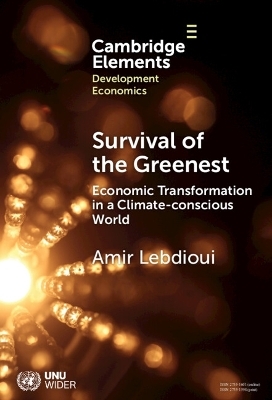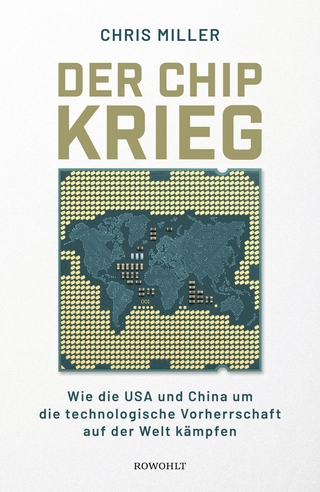
Survival of the Greenest
Economic Transformation in a Climate-conscious World
Seiten
2024
Cambridge University Press (Verlag)
978-1-009-50051-7 (ISBN)
Cambridge University Press (Verlag)
978-1-009-50051-7 (ISBN)
Environmental sustainability is no longer a choice but a necessity to maintain a competitive edge in the global economy. This Element shows how nations adjust to -and take advantage of- the new dynamics of structural transformation induced by climate change. This title is also available as Open Access on Cambridge Core.
The pathways to economic development are changing. Environmental sustainability is no longer a choice but a necessity to maintain a competitive edge in the global economy. Just like in nature, where survival hinges on adaptation, this Element shows how nations adjust to -and take advantage of- the new dynamics of structural transformation induced by climate change. First, by analysing the uneven industrial geography of decarbonisation, the inadequate state of climate financing and rise of green protectionism, it demonstrates that the low-carbon economy stands to increase economic disparities between nations, unless action is taken. Then, by examining green industrial policies and their varied success, it explains how governments can still join the green industrialisation race. Finally, it examines how to adapt green industrial policy to different starting points, market sizes, productive structures, state-business relations dynamics, institutional layouts, and ecological contexts. This title is also available as Open Access on Cambridge Core.
The pathways to economic development are changing. Environmental sustainability is no longer a choice but a necessity to maintain a competitive edge in the global economy. Just like in nature, where survival hinges on adaptation, this Element shows how nations adjust to -and take advantage of- the new dynamics of structural transformation induced by climate change. First, by analysing the uneven industrial geography of decarbonisation, the inadequate state of climate financing and rise of green protectionism, it demonstrates that the low-carbon economy stands to increase economic disparities between nations, unless action is taken. Then, by examining green industrial policies and their varied success, it explains how governments can still join the green industrialisation race. Finally, it examines how to adapt green industrial policy to different starting points, market sizes, productive structures, state-business relations dynamics, institutional layouts, and ecological contexts. This title is also available as Open Access on Cambridge Core.
1. A Changing Climate for Economic Development; 2. Rethinking Resilience to Climate and Transition Risks Beyond the Adaptation/Mitigation Dichotomy; 3. Industrial Opportunities Arising Out of Low Carbon Transitions: Who Benefits?; 4. Governments as Referees and Head Coaches: The Political Economy of Green Industrial Policy; 5. No Green Silver Bullets: Various Contexts and Pathways for Green Economic Transformation; 6. Kicking Away the Green Ladder: Green Protectionism, Broken Pledges and Double Trade Standards; 7. Conclusion and Reflections on the Future Relevance of Development Economics.
| Erscheinungsdatum | 04.05.2024 |
|---|---|
| Reihe/Serie | Elements in Development Economics |
| Zusatzinfo | Worked examples or Exercises |
| Verlagsort | Cambridge |
| Sprache | englisch |
| Themenwelt | Geschichte ► Teilgebiete der Geschichte ► Wirtschaftsgeschichte |
| Naturwissenschaften ► Biologie ► Ökologie / Naturschutz | |
| Wirtschaft ► Volkswirtschaftslehre | |
| ISBN-10 | 1-009-50051-1 / 1009500511 |
| ISBN-13 | 978-1-009-50051-7 / 9781009500517 |
| Zustand | Neuware |
| Informationen gemäß Produktsicherheitsverordnung (GPSR) | |
| Haben Sie eine Frage zum Produkt? |
Mehr entdecken
aus dem Bereich
aus dem Bereich
wie die USA und China um die technologische Vorherrschaft auf der …
Buch | Hardcover (2023)
Rowohlt (Verlag)
30,00 €
eine Globalgeschichte des Kapitalismus
Buch | Hardcover (2023)
C.H.Beck (Verlag)
38,00 €


